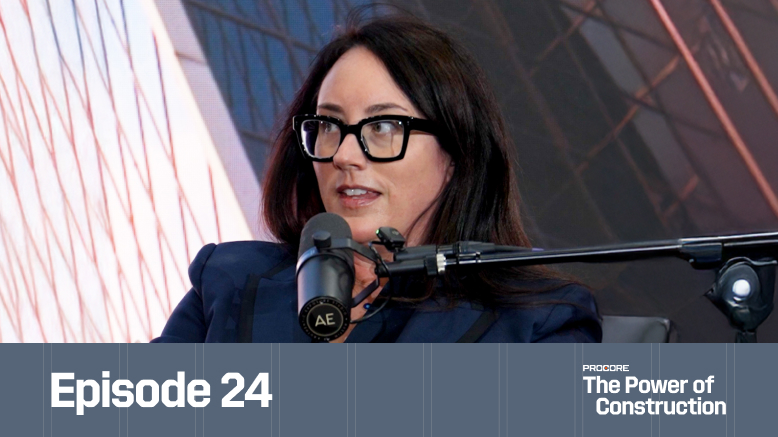A Nuanced View of Construction Productivity
The conversation begins with an examination of McKinsey's latest report, "Delivering on Construction Productivity is No Longer Optional," and the persistent narrative about construction's productivity challenges. Chin, speaking as a "recovering academic," offers a more nuanced perspective on productivity statistics.
While acknowledging room for improvement, she points out that construction projects are becoming increasingly complex, safety standards have improved dramatically, and academic studies don't always capture the full picture of progress.
The Four Pillars of Productivity Improvement
Suffolk focuses on four key areas identified by McKinsey for productivity enhancement:
- Nurturing supplier ecosystems across projects rather than managing relationships project by project
- Upskilling people to develop capabilities that don't currently exist in the industry
- Scaling initiatives across project portfolios rather than running isolated pilots
- Applying technology purposefully to solve real business problems rather than experimenting with technology for its own sake
The Assessment Framework
When Chin joined Suffolk, she implemented a comprehensive assessment across three critical dimensions:
Data and Systems Assessment: Understanding existing systems, data states, master data elements, and transactional information to establish what tools and information were available.
Use Case Development: Articulating how technology could transform specific processes (safety, preconstruction, scheduling) and quantifying potential value to prioritize high-impact, low-effort initiatives.
People Assessment: Identifying leaders, champions, and sponsors ready to drive change—the most critical and artistic element of transformation.
Safety as the Strategic Starting Point
Suffolk chose safety as their visible entry point for data transformation for multiple reasons:
- Moral imperative: Nobody argues against saving lives
- Data simplicity: Safety data is relatively structured and clean
- Clear objectives: Zero incidents provide unambiguous goals
- Leadership alignment: New safety leadership was passionate about change
- Business impact: Safety improvements affect both human and financial costs
Building the Data Foundation
While safety provided visible quick wins, Suffolk simultaneously invested in foundational infrastructure through their project dashboard initiative. This required integrating data from multiple systems (Primavera P6, Procore, safety systems, ERP) into a central data lake, creating automated dashboards that replaced manual Excel-based reporting processes.
The dashboard initiative delivered transparency up and down the organization, providing different levels of synthesis for different decision-makers while eliminating time-consuming manual data compilation.
The Critical Trifecta: Data, IT, and Operations
Chin emphasizes the importance of collaboration between three distinct functions:
Data Teams: Must be close to business operations, understand value drivers, speak business language, and maintain analytical agility and curiosity.
IT Teams: Provide stability, system management, vendor relationships, implementation expertise, and infrastructure maintenance.
Operations Teams: Know what matters, face daily realities, provide problem specifications, and execute solutions at scale.
This collaboration enables brainstorming and solution development that no single function could achieve independently.
Culture as the Foundation for Change
Suffolk's existing culture of innovation and competitiveness, led by CEO John Fish, provided fertile ground for data transformation. The company's competitive nature proved crucial—dashboards and leaderboards tap into this competitiveness while driving focus on data quality and process improvement.
The transparency created by dashboards drove curiosity and engagement. When people saw their performance data, they naturally wanted to understand and improve their numbers, creating a virtuous cycle of data quality improvement and business impact.
The No-Fault Learning Culture
Critical to Suffolk's success was establishing a "no-fault culture" around data transparency. Leadership modeled the message that initial data might not be perfect, but the goal was learning and improvement, not punishment.
This approach prevented rejection of transparency and encouraged continuous growth rather than defensive behavior.
From Historical Reporting to Predictive Analytics
The real breakthrough came when Suffolk moved beyond historical dashboards to predictive analytics. Using cleaned data to identify early indicators of cost erosion, safety risks, and schedule slippage captured project executives' attention because it enabled proactive rather than reactive management.
The Curiosity-Driven Journey
Chin's career path—from physics to English literature to McKinsey consulting to construction—reflects a driving curiosity about how things work.
Physics taught her natural world principles, McKinsey revealed how organizations drive change, and construction provides the opportunity to impact communities through the buildings where people "work, live, and play."
Future Technology Trends
Looking ahead, Chin identifies three key technology areas:
Artificial Intelligence: Potential to automate tasks, reduce non-value-added time, and fundamentally change how the industry interacts with information by serving the right data to the right people at the right time.
Robotics: Still largely in pilot phases with limited scaled applications, but structural factors like labor shortages and productivity demands will eventually drive adoption.
Sustainable Materials: Innovations addressing embodied carbon and sustainability requirements, enabling the industry to make meaningful environmental impact.
The Competitive Advantage of Data
Suffolk's competitive culture proved instrumental in driving data adoption. Leaderboards and performance transparency tap into natural competitiveness while gamifying improvement. When performance becomes visible, everyone wants to understand why they're not at the top and what they need to change to get there.
This transparency drives curiosity, data quality improvements, and ultimately enables learning from collective experience rather than treating each project as an isolated island.
Rapid-Fire Q&A with Jit Kee Chin
Book Recommendation: I, Robot by Isaac Asimov—a classic that demonstrates how dreams become maps for future innovation
Sources for Different Perspectives: Multiple news sources across the political spectrum; The Economist for balanced reporting
Advice to Younger Self: Focus more on building relationships rather than just analytical thinking
Innovation Shaping Construction's Future: Artificial Intelligence
Industry Tagline: "Build tomorrow today"—don't wait for change, create it
Key Takeaways
This episode demonstrates that successful data transformation requires:
- Strategic Assessment: Understanding systems, use cases, and people before beginning transformation
- Cultural Alignment: Building on existing organizational strengths rather than fighting against them
- Collaborative Approach: Integrating data, IT, and operations expertise for comprehensive solutions
- Psychological Safety: Creating no-fault learning environments that encourage transparency
- Competitive Motivation: Leveraging natural competitiveness to drive data quality and engagement
- Predictive Focus: Moving beyond historical reporting to forward-looking analytics that enable proactive management
- Systematic Scaling: Progressing from experiments to pilots to standard operating procedures
- Relationship Building: Recognizing that organizational change ultimately depends on human connections
Jit Kee Chin and Suffolk Construction prove that data-driven decision making isn't just about technology—it's about understanding people, culture, and business value. Their systematic approach to transformation provides a roadmap for other construction companies seeking to harness the power of data while maintaining focus on the human elements that make change possible. The conversation reveals that the future belongs to organizations that can combine technological capability with cultural intelligence to drive meaningful business impact.







